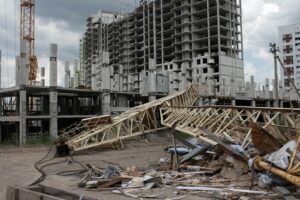An EU-funded project called PASSEPARTOUT is developing a new gas-sensing network that can analyse multiple gasses in real-time.
The system is sufficiently compact (‘hand sized’) and affordable (sub €1k) that it is envisioned they could become as ubiquitous as CCTV cameras, with one on every lamppost if needed.
The system uses laser technology to detect even the smallest amount of toxic gasses in large, densely populated regions.
By connecting multiple sensors into an analysing network, PASSEPARTOUT can spot trace amounts of numerous gasses (including nitrogen dioxide, sulphur dioxide, carbon monoxide, ozone and particulate matter) in real-time, in environments such as schools, towns, and cities.
The project coordinator Dr William Whelan-Curtin said: ‘The miniature PASSEPARTOUT hyperspectral optical-based sensors will provide a comprehensive approach to understanding urban air quality. To have a widespread network and to take meaningful steps towards a smart city, current, expensive methods are not feasible.
‘At present, accurate assessments of urban air are difficult. Air quality varies significantly over time, over short distances and across different areas within a city. Traditional monitoring methods struggle to capture these nuanced variations adequately. We are working to provide a system with high precision and excellent spatial resolution to detect NOx, SO2, NH3, CH4, CO, CO2, and black carbon.’
The system works by using the photothermal and photo-acoustic effects. The laser creates pulses or small blasts of laser light. When the laser light hits a toxic gas, the molecule absorbs light energy, giving off a heat ‘signature’ that is then reported back to the system. The system then unmistakably identifies what the harmful gas is, as well as how much of it is present.
It is hoped that the size and affordability of the monitors will lead to widespread adoption across urban locations.
Dr William Whelan-Curtin again: ‘We would like to make the technology as common as video surveillance by installing a detector on every lamppost. As part of the project, we are developing a smartphone app to check air quality in real-time. In the future, we hope this can be integrated into Google Maps so that your journey to and from work or school can show you not just traffic hotspots but also the route with the cleanest air.
‘Ultimately, we want to help save lives and help citizens everywhere enjoy clean air. At the sub-one thousand Euro price tag, our technology will enable municipalities, environmental agencies, and researchers the ability to make targeted interventions and policy decisions for a fraction of the price.’
The technology is currently being trialled in landfill sites, seaports, at the University of Bari and in some schools in Cork.

















Leave a Reply